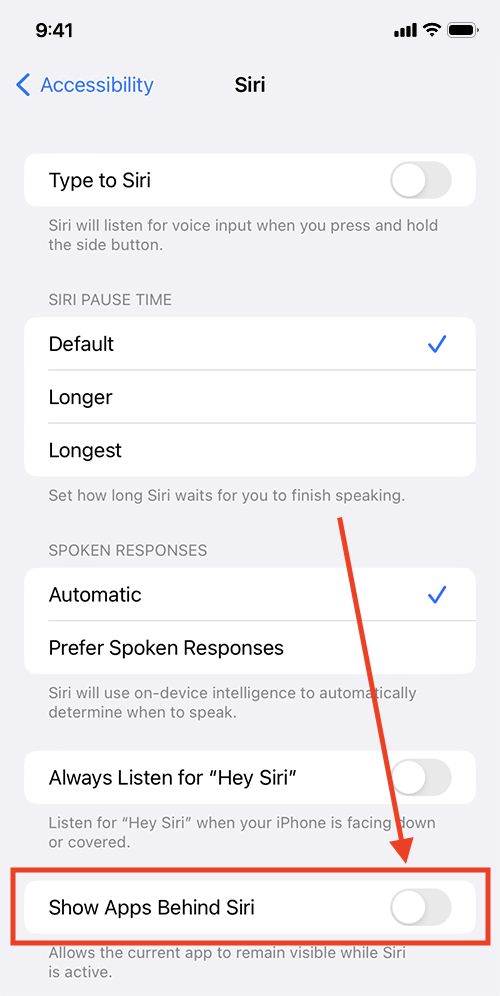To find out more about using Siri, see How to use Siri in iOS 16 on your iPhone, iPad or iPod Touch. If you find it easier to type than speak, you can also type queries to Siri. See How to use Siri without speaking in iOS 16 for more information.
Short guide
- Tap the Settings icon on your Home screen to launch the Settings app. Scroll down and tap Siri & Search.
- If you want to change the language Siri uses, tap Language and choose from the options. To change Siri’s voice, tap Siri Voice.
- To change the level of feedback you receive when asking a query, tap Siri Responses. Under Spoken Responses, tap Always, When Silent Mode is Off or Only with "Hey Siri" to set when Siri gives a spoken response.
- Tap Always Show Siri Captions to show everything that Siri says as text on-screen.
- Tap Always Show Speech to get a transcription of your spoken questions and commands on-screen.
- To access further settings, go back to the Settings app and tap Accessibility. Scroll to the bottom of the screen and tap Siri.
- Tap Always Listen for "Hey Siri" to ask your device to listen for the prompt even it's face down or covered. Tap Show Apps Behind Siri to turn this off if you find the apps distracting.
Before and after

This section takes you step by step through customising Siri’s settings on your iPhone or iPad, complete with pictures of the screen to help.
Open Siri's settings
1. To open Siri’s settings, tap the Settings icon ![]() on your Home screen to launch the Settings app. Scroll down and select Siri & Search from the list.
on your Home screen to launch the Settings app. Scroll down and select Siri & Search from the list.
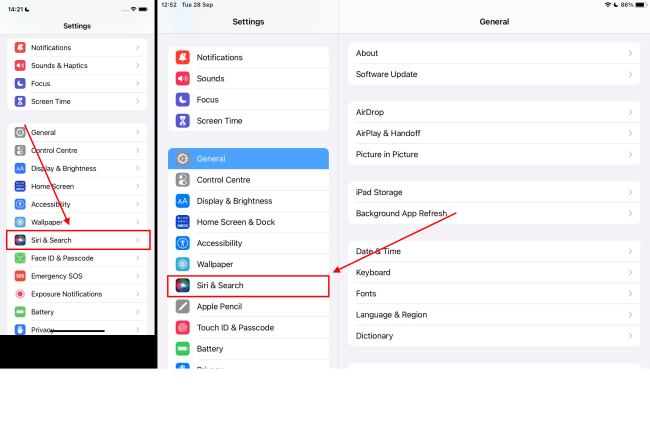
Change Siri's voice
2. To change Siri's voice, tap Siri Voice.
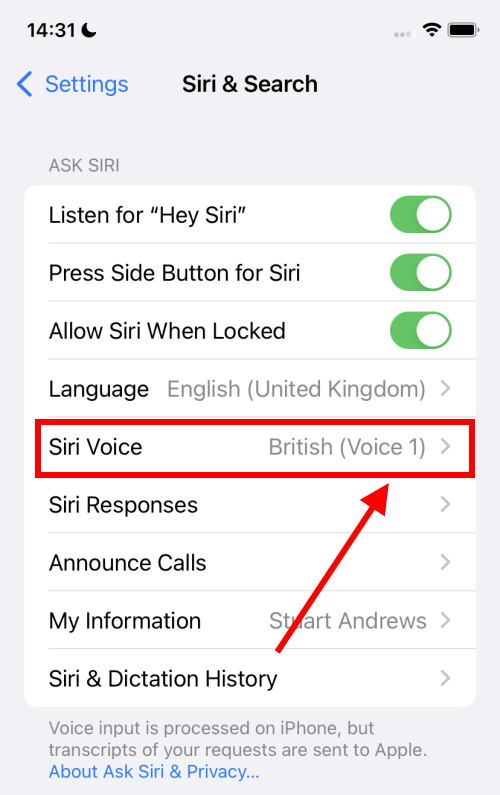
Select accent and voice
3. Now select an accent and a voice for Siri from the available options.
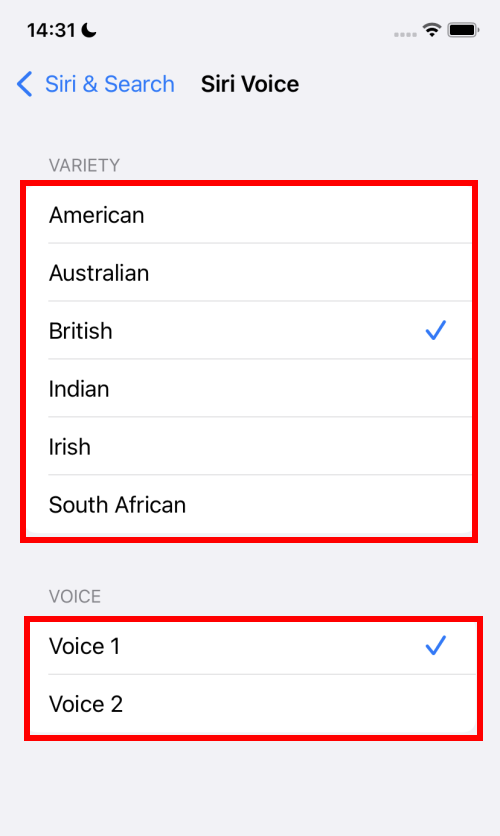
Change how Siri responds
4. You can change how Siri responds to a quiestion or command so that Siri responds silently or gives spoken answers and feedback. Tap Siri Responses.
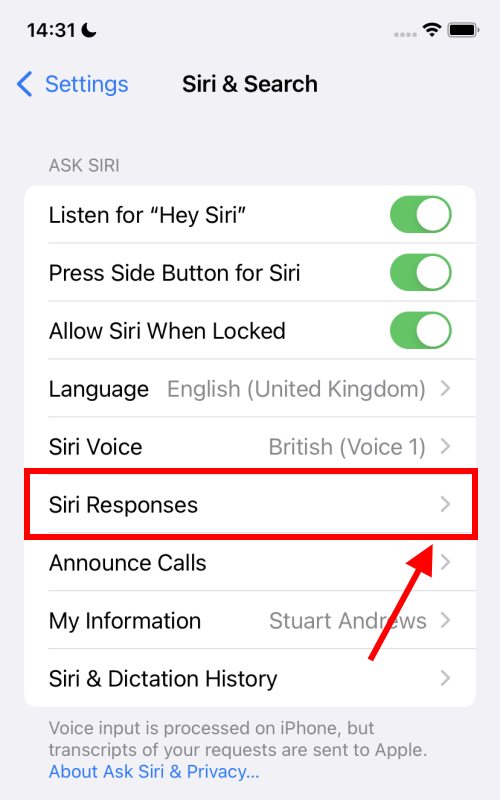
Choose when Siri talks back
5. Siri has two options for giving you spoken feedback when you ask a query. In Automatic mode, Siri uses on-device intelligence to determine when to give spoken feedback. If you would prefer to always hear spoken feedback, select Prefer Spoken Feedback.
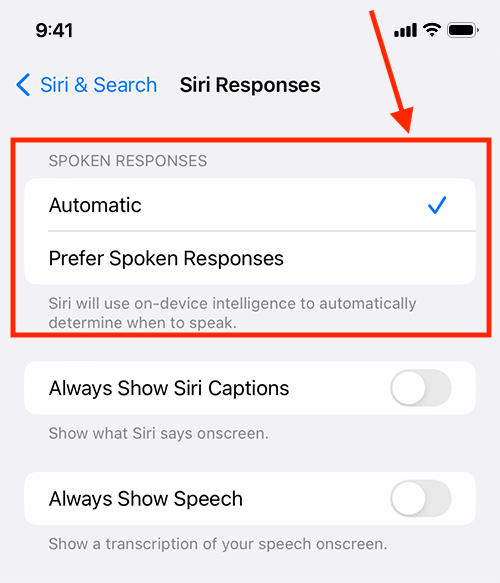
See what Siri says
6. Tap Always Show Siri Captions to show everything that Siri says as text on-screen.
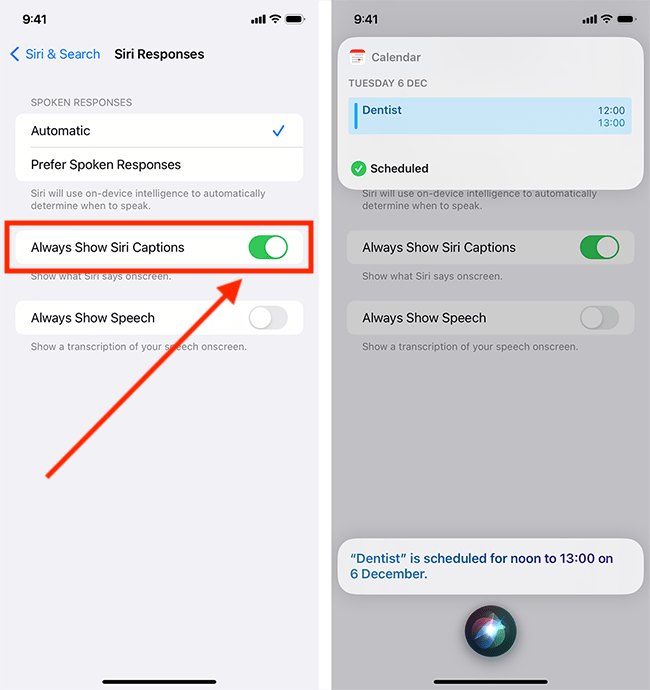
See what you say as text
7. You can also see what Siri thinks you said. Tap Always Show Speech to get a transcription of your spoken questions and commands on-screen.

Open Siri's accessibility settings
8. To access further useful settings, tap the Back button to go back to the main Settings screen and tap Accessibility. Scroll to the bottom of the screen and tap Siri.
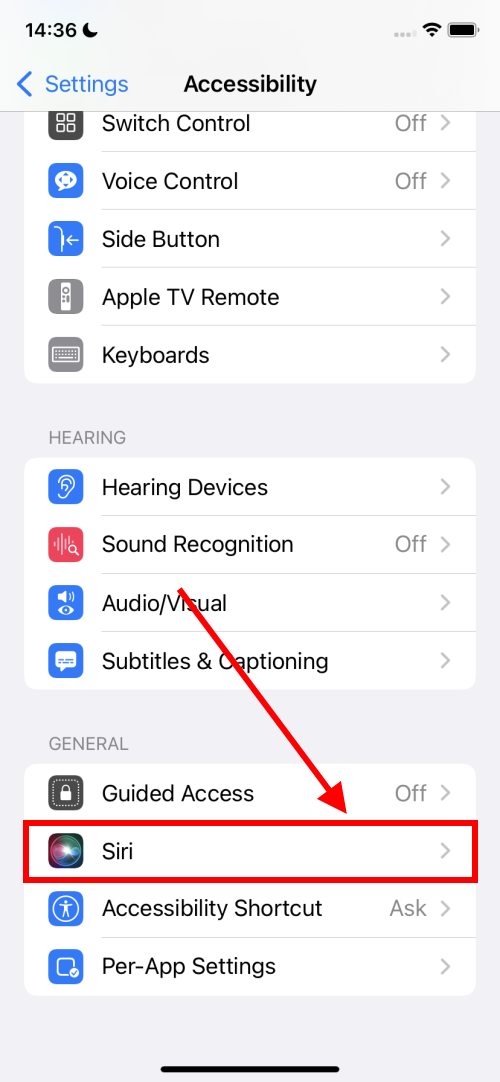
Change how long Siri waits before responding
9. If you find Siri starts to answer before you have finished asking your query, you can set Siri to wait before responding. Under the Siri Pause Time section, choose Longer or Longest.
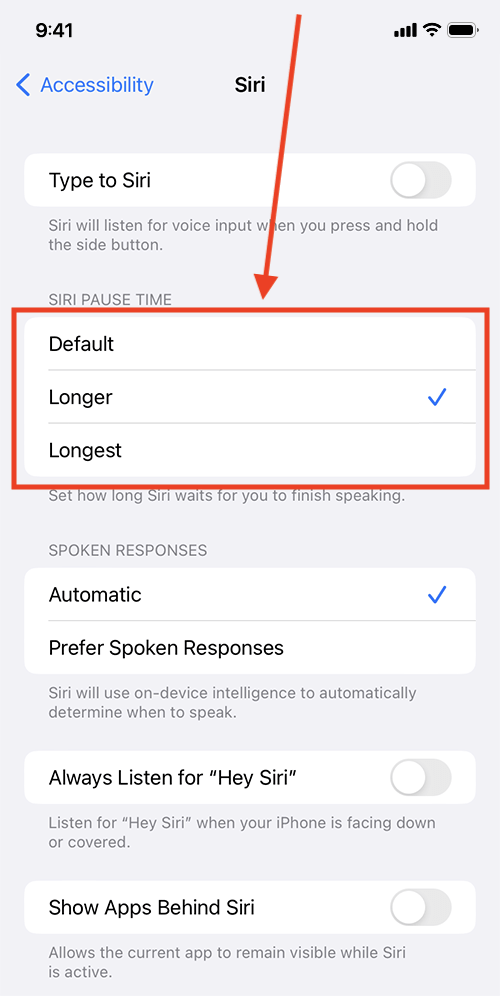
Keep Siri listening
10. Some of these settings duplicate the settings we used earlier, but tap Always Listen for "Hey Siri" to ask your device to listen for the prompt even it's face down or covered.

Remove distracting backgrounds
11. Finally, if you find the apps in the background distracting while you're using Siri, tap Show Apps Behind Siri to turn this off.
